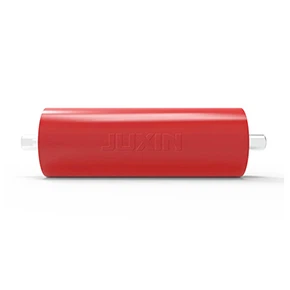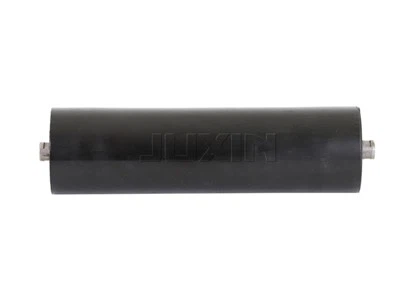Common structural type
1.Universal Fixed Belt Conveyor
Fixed belt conveyor is the most commonly used type in coal mines, mainly used in situations where the horizontal or inclination angle is less than 18 °. The characteristics of this type of conveyor are that the frame is fixed on the bottom plate or foundation, and is often used in inclined shafts, underground main tunnels, and coal preparation plants. It is not very convenient when moving or installing due to errors. The belt width can be various types such as 1600mm, 1400mm, 1200mm, 1000mm, 800mm, etc.
2.Lightweight Fixed Belt Conveyor
The conveyor belt of a lightweight fixed belt conveyor is relatively thin and has a light load, with a transport distance generally not exceeding 100m and a motor capacity not exceeding 22kw.
3.Steel Cord Belt Conveyor
It belongs to high-strength belt conveyors, with parallel thin steel ropes in the core of the conveyor belt. The transport distance of one conveyor can reach several kilometers to tens of kilometers. High strength enables single machine long-distance transportation, simplifies the transportation system, increases transportation efficiency, and significantly reduces equipment and transportation costs compared to general fabric core tape conveyors. The joint of steel wire rope core tape needs to be vulcanized and re glued, and the operation process is complex. Heavy machinery uses a steel wire rope core belt conveyor with a width of 1200mm and a length of 1980m.
1.Universal Fixed Belt Conveyor
Fixed belt conveyor is the most commonly used type in coal mines, mainly used in situations where the horizontal or inclination angle is less than 18 °. The characteristics of this type of conveyor are that the frame is fixed on the bottom plate or foundation, and is often used in inclined shafts, underground main tunnels, and coal preparation plants. It is not very convenient when moving or installing due to errors. The belt width can be various types such as 1600mm, 1400mm, 1200mm, 1000mm, 800mm, etc.
2.Lightweight Fixed Belt Conveyor
The conveyor belt of a lightweight fixed belt conveyor is relatively thin and has a light load, with a transport distance generally not exceeding 100m and a motor capacity not exceeding 22kw.
3.Steel Cord Belt Conveyor
It belongs to high-strength belt conveyors, with parallel thin steel ropes in the core of the conveyor belt. The transport distance of one conveyor can reach several kilometers to tens of kilometers. High strength enables single machine long-distance transportation, simplifies the transportation system, increases transportation efficiency, and significantly reduces equipment and transportation costs compared to general fabric core tape conveyors. The joint of steel wire rope core tape needs to be vulcanized and re glued, and the operation process is complex. Heavy machinery uses a steel wire rope core belt conveyor with a width of 1200mm and a length of 1980m.
Special structural type
1.Extensible Belt Conveyor
The expandable belt conveyor is mainly used for transporting materials in coal mining working face, roadway transportation or tunnel excavation. The tail of the machine can expand and contract with the changes of the working face, effectively solving the continuous transportation of materials under special conditions. In the comprehensive mechanized coal mining face and comprehensive mechanized excavation face, the advancing speed of the face is relatively fast, and the length and transportation distance of the roadway also change accordingly. This requires the transportation equipment to be able to flexibly and quickly extend and shorten. The expandable belt conveyor is designed and manufactured to meet this need. This type of conveyor actually has an additional belt storage bin and a set of belt storage devices installed compared to the general fixed belt conveyor. This device temporarily serves to store an appropriate amount of tape. When the tail of the moving conveyor is extended or retracted, the tape storage device can release or store a certain length of tape accordingly, with tape widths of 1200mm, 1000mm, and 650mm.
Large angle belt conveyor and vertical lifting belt conveyor
According to the requirements of on-site space conditions.
2.Horizontal Turning Belt Conveyor
Horizontal turning belt conveyors can bypass buildings or unfavorable terrain, reduce or even eliminate intermediate transfer stations, centralize system power supply and control, reduce the risk of material overflow or blockage, reduce dust flying, noise, and unnecessary energy consumption.
3.Air Cushion Belt Conveyor
The conveyor belt runs on an air film (cushion), replacing the running rollers with stationary air chamber disc-shaped grooves and air chambers with air holes. This reduces the number of moving parts, overall equivalent mass, resistance, efficiency, and runs smoothly, which can increase belt speed. But generally, the block size of the transported materials does not exceed 300mm.
4.Pipe Belt Conveyor
The conveyor belt is rolled into a circular tube shape through the guidance of rollers, and is equipped with a dedicated roller group structure and body structure, which is called a tubular belt conveyor. The conveyor belt can be rolled into a circular tube to achieve closed conveying of materials, reduce the pollution of powdered materials to the environment, and realize bending and large inclination transportation.
5.Reversible Belt Conveyor
The conveyor can run in both forward and reverse directions to accommodate two or more discharges.






